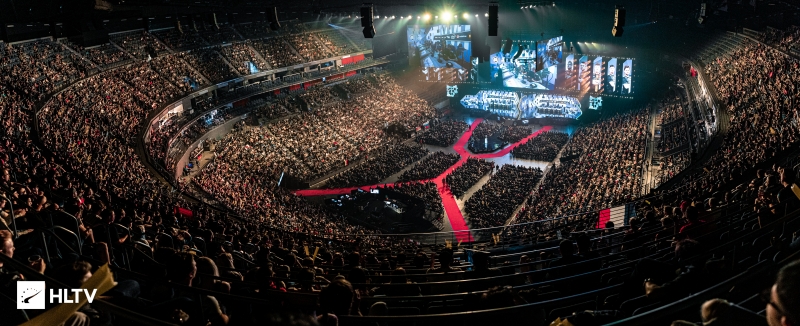
Digital athletics in analogue stadiums: Comparing gratifications for engagement between live attendance and online esports spectating
As the new year begins, so do the new leagues and qualifying rounds for the 2020 esports calendar. This year also sees the first live exhibition event held at the ICE gaming expo, with eight teams including NAVI and ENCE competing for a reported prize pool of $250,000 [1]. Considering that the event will be streamed live, as with any other event, what are the benefits of watching the event in person – how do the two experiences compare to one another?
While there is a significant body of research which has investigated the differences between live attendance at traditional sporting events and consuming them via broadcast media, the same cannot be said for esports. Given that esports are watched by hundreds of millions of people every year, and that many esports have overtaken large traditional sports in spectator numbers (although there is debate about the way in which the figures are calculated) [2], there is a need to further understand attendance behaviour for a comparatively new cultural phenomenon. Indeed, esports has additional points of interest concerning live attendance as it is an activity which is primarily mediated through internet technologies.
We have recently published “Digital athletics in analogue stadiums: Comparing gratifications for engagement between live attendance and online esports spectating” [3], in which we found significant difference between online spectators and live attendees. Online spectators were found to rate the motivational factors of drama, acquisition of knowledge, appreciation of skill, novelty, aesthetics and enjoyment of aggression higher than live attendees. Correspondingly, social interaction and physical attractiveness were rated higher by live attendees. Vicarious achievement and physical attractiveness positively predicted intention to attend live sports events while vicarious achievement and novelty positively predicted future online consumption of esports. Finally, vicarious achievement and novelty positively predicted recommending esports to others.
These results are particularly interesting when compared to traditional sports where motivational factors such as drama, for example, have been found to be more strongly associated with live attendance [4]. This study offers one of the first attempts to compare online spectating and live attendance, in order to better understand both the phenomenon and the consumers involved. As the growth of esports is predicted to continue in the coming years, further understanding of this phenomenon is pivotal for multiple stakeholder groups.
Digital athletics in analogue stadiums: Comparing gratifications for engagement between live attendance and online esports spectating
Reference: Sjöblom, M., Macey, J., & Hamari, J. (2019). Digital athletics in analogue stadiums. Internet Research. Ahead-of-print. doi: 10.1108/INTR-07-2018-0304.
See the paper for full details:
Abstract
Esports (electronic sports) are watched by hundreds of millions of people every year and many esports have overtaken large traditional sports in spectator numbers. The purpose of this paper is to investigate spectating differences between online spectating of esports and live attendance of esports events. This is done in order to further understand attendance behaviour for a cultural phenomenon that is primarily mediated through internet technologies, and to be able to predict behavioural patterns.
References:
[1]ICE London. December 6th 2019. “Esports legends join ICE London’s league.” Retrieved from: https://www.icelondon.uk.com/event-news/esports-legends-join-ice-londons-league.
[2]TNL.media. March 9th 2017. “Time To Kill The “ESports Beats Sports Viewers” Stat”. Retrieved from: https://tnl.media/esportsnews/2017/3/8/time-to-kill-the-esports-beats-sports-viewers-stat.
[3]Sjöblom, M., Macey, J., & Hamari, J. (2019). Digital athletics in analogue stadiums. Internet Research. Ahead-of-print. doi: 10.1108/INTR-07-2018-0304.
[4]Neale, L., & Funk, D. (2006). Investigating motivation, attitudinal loyalty and attendance behaviour with fans of Australian Football. International Journal of Sports Marketing & Sponsorship, 7(4).




Sorry, the comment form is closed at this time.